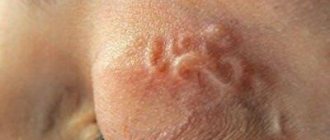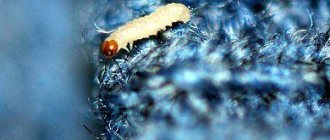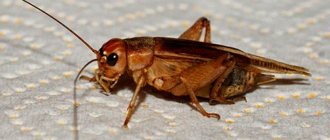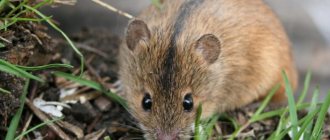Various small insects, bugs and other rodents already cause enough hostility in most people, but when they appear in their home, it becomes a real disaster.
Unfortunately, no one is immune from the appearance of small parasites, and they can take a liking to absolutely any room - from an abandoned garage, which is not so scary, to a five-star hotel, where this is completely unacceptable and, of course, will disgust everyone nearby.
And this indignation is absolutely understandable, because small “vermin,” as they are popularly called, are not only unpleasant for humans, but can also pose a serious health hazard and contribute to the development of various diseases not only in humans, but also in domestic animals.
Anyone who has encountered such a problem most likely already knows that getting rid of parasites on your own is an incredibly difficult task, and often almost impossible because... requires sufficient knowledge and experience in pest control.
If you do decide to try to deal with them yourself, then first it would be a good idea to find out what exactly you have to do. Perhaps you have decided that you need to disinfect your apartment ? Or maybe pest control ? What if you still need deratization ?
Since the procedures for exterminating them differ depending on the type of pest, it is better to understand this issue in advance. In this article we will talk about these concepts and the difference between them.
What is disinfection
Disinfection (or disinfection). Disinfection is generally understood as a set of measures aimed at destroying pathogens of various infectious diseases and toxins in the external environment. Depending on the situation, there are several types of disinfection.
Types of disinfection
- Preventative - such disinfection is mainly aimed at preventing the emergence of infectious diseases and should be carried out on a regular basis. Typically, this type of disinfection is carried out in crowded places, especially children, due to the high susceptibility of the young body to various viruses and harmful bacteria.
- Current - disinfection of this type should be carried out in order to limit the spread of infection from an already existing source of disease. Its task is to prevent widespread spread.
- Final - this type of disinfection implies the complete release of the disinfected premises from infectious agents and should be carried out after the source of the virus has been removed - after the object has recovered, been hospitalized or died.
Based on the above types, we can conclude that only preventive disinfection can be carried out on your own, and only an experienced disinfection specialist should deal with the current and final stages of cleaning the premises.
Disinfection methods
The process of cleaning a room from viruses can be carried out in different ways. In practice, three main disinfection methods are usually used.
- The mechanical method is the simplest and most unreliable method of disinfection. With this approach, the number of bacteria and viruses only decreases, but is not completely reduced. This method includes washing, regular laundry, garbage removal and other preventive measures.
- The physical method is of higher quality, in contrast to the mechanical one, and is usually aimed at the specific object of disinfection. These methods mean disinfection using high temperatures - steaming, boiling or heating; or under the influence of ultraviolet radiation - quartz treatment or the use of bactericidal lamps.
- Chemical is the most reliable disinfection method. Its essence lies in the use of chemical solutions that have a detrimental effect on bacteria and their cells. Typically, chlorine-containing solutions are used for chemical disinfection, which contain: chloramine, bleach, anolyte and other substances similar in chemical composition.
Having dealt with disinfection, it is worth talking about what disinsection and deratization are.
Deratization.
This is the process of exterminating rodents of various sizes that cause irreparable harm to human activities. Rats, mice and other small rodents can spoil food, furniture, chew walls, and also transmit infections.
The deratization process often involves the use of various toxic materials, and therefore is carried out by a specially trained person in compliance with certain safety measures.
What is pest control
Desinexation (extermination of insects) . Disinsection is understood as one of the types of disinfection, which is the destruction of insects capable of carrying various infections using special chemicals, by exposure to hot water with steam or using biological agents.
Disinsection also refers to the procedure for exterminating any insects whose proximity to humans is considered undesirable: flies, mosquitoes, cockroaches, ants, bed bugs, etc.
In simple terms, pest control is a set of measures aimed at getting rid of harmful or infected insects.
Types of pest control
- Complete extermination is the use of special means that are lethal to the insects against which disinfestation is aimed.
- Preventive disinfestation is the use of products that create unfavorable conditions for the development and spread of harmful insects in the disinfested area - cockroaches, bedbugs, lice, etc. Prevention consists of keeping the house clean, using protective nets on windows and doors, and preventing harmful insects from entering the room.
Also, in addition to the main types, several different disinfestation methods can be identified.
Disinsection methods
- Mechanical - disinfestation by constantly maintaining the cleanliness of the premises, regular cleaning and washing.
- Physical - this method involves exposure to high temperatures - hot steam, ultraviolet light and direct fire.
- Biological - disinfestation by using other animals, such as birds, to combat parasites.
- Chemical - disinfestation of premises using special chemicals aimed at destroying or creating unfavorable conditions for harmful insects. Usually these are various chlorine-based solutions.
Deratization or destruction
Deratization is necessary to protect people and animals from infections.
It will also help protect property from the teeth of rodents.
The root of this definition is of French origin and translates as rat.
To prevent rodents from appearing, you must:
- Thoroughly clean the room and yard.
- Seal all cracks (you can use concrete or fine metal mesh).
- Store waste in tightly closed metal containers.
- Leave food in inaccessible places.
Exterminatory deratization is a series of measures aimed at exterminating rodents. To accomplish the task, poisons, traps, mousetraps, glue, and bacteria are used. Experts study the food preferences of rodents, their habitats, and find out their numbers. Based on the data obtained, the most effective means of combating parasites is selected.
The difference between preventative and exterminatory deratization is that one prevents the appearance of rodents, and the second destroys them.
Several methods of struggle are used:
- Chemical. Poisons used to kill rodents are called raticides. They are added to baits, scattered around places where parasites move, and poured into holes. They come in long-term and rapid-impact types.
- Mechanical. Traps, live traps, and traps are placed before the entrance to the burrow. With their help, animals are caught or killed. This method is used in conjunction with chemicals.
- Biological. In the off-season, bacteria from the salmonella group are used. They operate in a limited area. To use, you need to prepare a bacterial culture in the laboratory. One liter of the substance is mixed with 1800 grams of flour. The resulting mass is cut into pieces and placed in holes. You can soak 3 kilograms of grain or one kilogram of crackers in a liter of the resulting mixture for several hours. The bait is placed in places where rodents gather (in haystacks). For rats, about 25 grams of bait, and for mice, ten times less. Carcasses should be collected using tweezers or rubber gloves. Animal corpses are treated with a disinfectant and then burned or buried deep.
Everyone chooses a convenient and most suitable way of fighting.
What is deratization
Deratization (extermination of rats) is a set of measures to exterminate various types of rodents (mice, rats, voles, etc.). The deratization procedure is quite dangerous and must be carried out by a specially trained person, subject to a set of safety measures. If handled improperly, you can not only get rid of rats, but also cause irreparable harm to human health and pets.
Main types of deratization:
- Preventive deratization is a set of measures that are aimed at eliminating favorable conditions for the appearance of various types of rodents. This type of deratization includes, for example, blocking access of rodents to places suitable for making burrows or blocking access to food.
- Exterminatory deratization is measures that are taken when rodents have already appeared in a room and aimed at their complete destruction and taking measures for this.
Deratization can be carried out in different ways; usually one of the three methods of deratization listed below is used.
Main methods of deratization:
- The mechanical method is a method based on the use of various mousetraps, rat traps, traps and other traps.
- The chemical method is a method that uses various types of baits poisoned with poisons, or so-called raticides.
- Biological method is a method in which domestic animals that hunt them are used to kill rodents. This method is prohibited in enterprises.
- Gas method - this method is mainly used in field conditions and in small confined spaces - ships, cars, airplanes, etc.
© OchProsto.com
Helpful advice
Now that you have learned the difference between these terms, it is worth not just saying, but even recommending not to exterminate insects and rodents yourself.
Many organizations and companies are professionally engaged in providing such services, but you cannot immediately run to the first one you come across. They are required to provide a license and a logbook, and after that, before starting work, you can conclude an agreement with them.
Approximate prices and prices can be found on their websites - in our technological era, every serious company and organization should have its own website with all the relevant information. This is another important factor that should indicate the reliability of the company you are contacting.
Pest control
Disinsection is the extermination of small and large pests. One of the types of sterilization is getting rid of insects that can transmit viruses using chemical methods, through the influence of steam and boiled water. Extermination of such insects as: Prussians, flies, midges, spiders and bedbugs.
Types of disinfestation: 1. Complete destruction - use of special means. 2. For preventive purposes. Disinsection methods: 1. Mechanical. 2. Physical. 3. Biological. 4. Chemical.
Disinfection, disinsection and deratization - what is it?
All types of insects, rodents, etc.
They generate great antipathy in everyone, and when you meet them at home, it causes great discomfort. Much to our chagrin, no one is protected from the arrival of these small parasites and they can settle in completely different places, from a neglected dirty garage, which is not so offensive, to a five-star hotel, where this is no longer very acceptable. Anyone who has encountered this problem knows that getting rid of these pests without anyone’s help is not an easy task, and can sometimes be completely impossible; you need a rich supply of knowledge and practice in the battle against parasites. If, however, the decision was made to take the risk of fighting them on your own, then at the beginning of the matter you need to understand what exactly needs to be done. Most likely, disinfestation or deratization is needed.
cockroaches
Because the solution to this problem depends entirely on the type of pests, and the rules for their destruction also differ, you must first understand the essence of this issue. The sanitary-epidemiological station (SES) Ecocontrol will help with this.
Features of disinfestation
Disinsection includes measures aimed at combating pests that are carriers of various infectious diseases, such as ticks, mosquitoes, horseflies, sand flies, and flies. To destroy horseflies near pastures or stockyards, it is recommended to arrange small reservoirs containing a small amount of oil or kerosene. Once there, insects die very quickly. Naturally, such reservoirs should be inaccessible to animals.
To exterminate mosquitoes, the main work should be aimed at combating their larvae. To do this, experts recommend eliminating reservoirs that are of no economic importance. They can also be sprayed with emulsions that contain insecticides.
To combat ticks in areas where animals are grazed, experts recommend cutting down bushes. The area adjacent to livestock buildings must be cleared of weeds. If ixodid ticks appear on the skin of an animal, it requires spraying, wiping or bathing in the bath using special solutions.
Effective methods of deratization
Biological destruction
The method is ancient and safest for people. Domestic rodents can be exterminated by domesticated small domestic predators ; foxes, owls, and kites hunt pests in the field, which relieves their owners of the need to “communicate” with pests.
Disadvantages of the biological method:
- keeping a cat capable of hunting;
- the animal's reluctance to hunt;
- a threat to a cat's health when eating a sick rodent.
Mechanical method
The mechanical method is the most common in the fight against rodents and involves the use of mousetraps and other available traps .
Negative sides:
- dangerous for other curious residents (children, cats, dogs)
- requires attention;
- the problem of disposal of dead animals;
- Rodents may ignore devices.
Chemical method
Chemical deratization is widespread today and involves placing poison in places frequented by animals.
Negative sides:
- may attract the attention of other inhabitants of the house;
- carelessness in use causes poisoning.
Gas method
Gas deratization is available for use only in sealed enclosed spaces: the poison is sprayed indoors , causing the death of rodents if they enter the respiratory tract.
The method is effective due to the possibility of the poison penetrating into the most hidden places. Can only be used by a professional.
Negative sides:
- quite high price;
- it is necessary to involve specialists;
- the need for general cleaning after the fact;
- carrying out the procedure in production will require its suspension.
Using ultrasound
Ultrasonic deratization is the most modern method. Ultrasound negatively affects the feeling of safety of parasitic animals, and they leave the house in a state of discomfort. For people, the waves of the device are indistinguishable.
Minuses:
- relatively high cost of the device;
- applies to one area.
It is believed that the best result is achieved when using complex deratization due to mutual leveling of negative aspects using methods.
Timely implementation of disinfestation and deratization measures allows you to ensure a comfortable existence in your own home, so their importance cannot be overestimated. Following the basic principles of deratization and disinfestation will help get rid of unpleasant neighbors for a long time.











